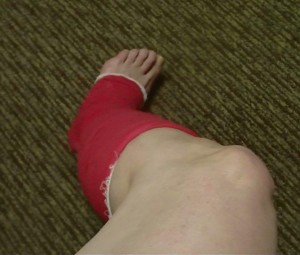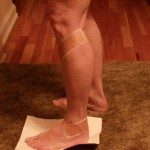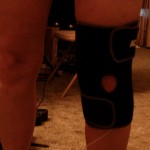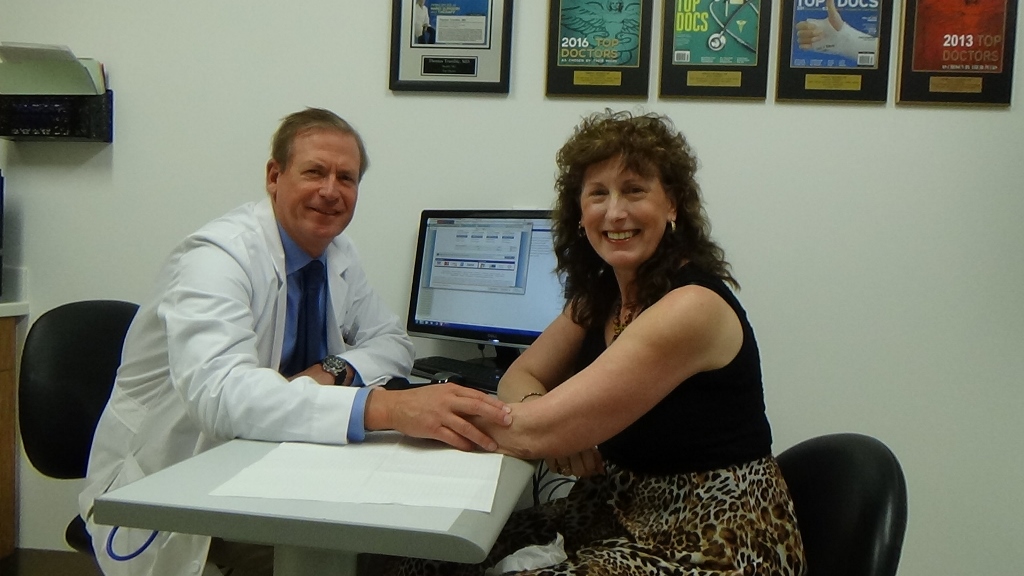
Now set free from my chronic condition with Proximal (Superior) Tibiofibular Posterior/Inferior Subluxation that had become a Chronic Recurrent Proximal Tib-Fib Syndesmosis Dislocation. HOW? The Arthrex TightRope Dynamic Stabilization Surgery with Dr. D. Christopher Main, D.O. Board Certified Orthopedic Surgeon at Midwest Bone & Joint Center, P.C.
I want to share My Story and Chronological History in diagnosing lateral knee pain. I am motivated to write as a sincere thank you and to give back to the internet world more information on the Proximal Tibiofibular Joint Instability. This is a real problem that can fall under the diagnostic radar or at least in my case with mainstream medical because it is not something that can always be directly seen on diagnostic tests. Rather it is a diagnosis of exclusion and more of a hands on diagnosis by medical professionals that subscribe more to manual therapy. If it were not for Chiropractors, Physical Therapists and ultimately a Board Certified Orthopedic Surgeon/Osteopathic Doctor that was very interested in my own subjective history and with symptoms classic or similar to his prior published case study, I would not be here writing this story. Here I go:
My story starts with Foot Drop that resolves after my Micro-discectomy in April 2002. In regards to lumbar back and/or pelvis, my chronological medical imaging and treatment history is documented at this tab in my website: Chronological History Tab
From April 2002-April 2010 – I had intermittent pain of entire left lower leg shin. Symptoms-tightness, stiff, nerve sensations, spasms of entire lower leg at night that would plantar flex my foot which caused me to throw myself out of bed. I was under the belief that it was the residual effect of the severe nerve compression caused by my prior L5-S1 mass herniation and that I couldn’t do anything about it even though I had successful surgery. WELL READ ON HERE for beginning of Proximal Tibiofibular Joint Dysfunction and/or please go to associated story in the Peripheral Nerve Surgery Blog.
April 2010 – Started Physical Therapy again for new additional pain just above my left knee cap. Patello-femoral syndrome was my diagnosis.
Oct. 2010 – Horse stepped on my left foot, major contusion and lateral ankle sprain
Nov. 2010 – I fell on my slippery deck and landed straight down on my left knee cap
Feb. 14, 2011 – I saw Dr. Tycho Kersten,MD a knee specialist at Northwest Orthopedics for Patello-femoral Syndrome, Pes bursitis, and Prepatellar Bursitis. Specialist’s findings: X-rays show no evidence of arthritis, knee joints intact, small ossification noted lateral left knee. The left knee does have significant patellofemoral irritability on grind testing and some medial patellofemoral facet tenderness with mild lateral patellar facet tenderness. Some hypersensitivity with bands of bursa, distal pole of the patella and tender over the pes bursa extending along the hamstrings. Mild tenderness along the IT band. No swelling, no joint line tenderness, full range of motion. Flexion, rotation and McMurray’s all negative.
March 2, 2011 – Per knee specialist’s order, I started a new session of Physical Therapy with Mark Bengston, MPT of Pinnacle Physical Therapy, Post Falls, ID. Mark specializes in the practices of the Postural Restoration Institute. We incorporated the use of the patented Protonics Neuromuscular Rehabilitation Device/brace for left leg rehab.
March-August, 2011 – I was doing very well in rehabing the Patello-Femoral Syndrome under Mark’s instruction. I found a new sense of strength in my quadriceps and the pain was gone above my knee.
Aug. 31, 2011 – I underwent Arthroscopic Ankle Surgery for Anterior-Lateral Impingement Syndrome related to prior ankle sprain of my left ankle by horse accident.(Future Blog to be written on my ankle story)
Sept. 2011 – While walking in a tall walking boot after the ankle surgery, I hyper-extended my left knee.
Sept thru Dec, 2011 – While in post-operative rehab for the ankle surgery, I continued to have steadily increasing left lateral knee pain after the hyperextension. I began to research every thing I could in diagnosing the pain I was experiencing. I had pain in the posterior-lateral corner of my knee, along with anterior knee pain between the tibia plateau and the fibula bone.
Nov. 2nd, 2011 – Depro-Medrol Cortisone Injection in left knee prepatellar bursitis and pes bursitis by Dr. Kerston. These injections have helped till this day on the 2 irritated bursa locations.
Dec. 6, 2011 – Thermography Scan of entire body. Radiologists Findings pertaining to left knee region: Hyperthermia towards the left popliteal fossa has increased compared to 6/14 and 11/1/2007 scans. This may correspond to underlying joint dysfunction.
Dec. 13th, 2011 – I started to see a muscle-skeletal pain management specialist who ordered both the knee MRI and an EMG study because of the localized nerve pain also associated with the lateral knee pain. Here is link to my preferred provider page for Dr. Patrick Soto, DO.
Dec. 27th, 2011 – link to report of my MRI Left Knee
When the MRI report came back negative in all categories, I was happy and distraught at the same time. Pain motivated me to continue my research into the Proximal Tibiofibular Joint when my knee MRI was negative.
For description of Fibula bone see Wikipedia
For description of Proximal Tibiofibular joint see Wikipedia
One of my favorite research articles published in The Journal of Orthopedic and Sports Physical Therapy is found here: Proximal Tibiofibular Subluxation Relationship to Lateral Knee Pain: A Review of Proximal Tibiofibular Joint Pathologies
A second favorite research article also published in The Journal of Orthopedic and Sports Physcial Therapy: The Superior Tibiofibular Joint: The Forgotten Joint
Jan 1st, 2012 – Being in so much pain and out of desperation, I begged a close friend of mine who is a retired chiropractor to review my research with the above articles on the Proximal Tibiofibular Joint. He confirmed that I had Postero-Inferior Fibula Subluxation. He did me a favor on the holiday and adjusted the joint and a loud pop took place. The extreme sharp pain I’d been having for several months began to subside. I sought his counsel many times thereafter as the joint would not stay in alignment.
When my chiropractor friend told me my problem, I proceeded to research his findings and came across a wonderful website for Dynamic Chiropractic. Here is a link to the Dynamic Chiropractic on line article which is well written pertaining to Proximal Tibiofibular Joint Dysfunction from which the following text is quoted:
“Postero-Inferior Fibula Subluxation:
Subluxation: The typical physical features of a postero-inferior subluxation of the fibula include pain at the fibula head, lateral collateral ligament pain at the ankle, lateral hamstring complaints, and restricted anterosuperior fibula joint play. This subluxation is often the result of inversion ankle sprain.
Adjustment: Place the patient supine with the affected knee flexed. Stand lateral to the involved limb with your cephalad hand with the popliteal fossa. Apply a thenar-pad contact against the fibular head. For leverage, grasp the anterior aspect of the patient’s lower leg with your caudad hand. Apply oblique pressure with your stabilizing hand to flex the knee and push the leg superiorly, while simultaneously briskly lifting the fibular head anteriorly with your contact hand to make the correction.
Following the adjustment, application of physiologic therapeutics such as ultrasound or interferential and ice can be applied at the doctor’s discretion. For overuse injuries and to correct biomechanical faults, I recommend custom-made, flexible orthotics to provide patients with a balanced, symmetrical foundation and relieve postural stress.
When pain allows, the patient should begin active care stretching and strengthening muscles. During the initial phases of treatment and during stressful activities, a wrap or tape could be applied as necessary to maintain joint integrity.”
January 9th, 2012 – my EMG study left leg with Dr. Steven Goodman, St. Luke’s Physiatry
Electrodiagnostic Findings: Needle electromyography of the Left Lumbar paraspinal and lower extremity muscles revealed normal insertional activity, no denervation potentials and motor units that appeared with normal amplitude and configuration on voluntary recruitment which was in a normal pattern with full interference. Left peroneal motor disal latency, conduction velocities below and across the fibular head, and amplitudes normal. Left superficial peroneal distal latency normal with diminished amplitude.
Diagnostic Impression: This is an essentially normal study without evidence of Left lumbar radiculopathy or peroneal nerve entrapment at the fibular head; the diminished superficial peroneal sensory amplitude is of doubtful clinical significance, possibly related to local injury.
Jan. 9th, 2012 – Follow up appointment with Dr. Kersten, my knee specialist at Northwest Orthopedics. He basically found me to have a normal-looking knee exam along with a normal knee on MRI, and normal EMG study. As a surgeon, he did take interest in the above mentioned research articles and he wrote me a kind and supportive letter from which I quote: ” I understand your frustration, but the bottom line is I do not have a good explanation as to where your pain is coming from. I understand your feelings that it may be the tib-fib joint and perhaps you are right and I am wrong, but I do not get any sense of that from your exam or the MRI, or putting any of that together…..Perhaps other physicians, maybe even non surgeons, would have a different take on the knee….I wish you the best in your search to solve this problem. My recommendations stand at conservative management with bracing and physical therapy, etc.”
What was I suppose to do when a knee specialist couldn’t definitively identify my knee problem? At this medical crossroad through many tears and prayer I turned to my Lord, the Great Physician, and I did not give up! Please read my Spiritual Journey blogs for the spiritual side of my life which directly impacts all my medical journeys (see Diagnosis Page). Later on I realized how much God did use Dr. Kersten in His Plan for my life. However, I just did not know it at that moment when I felt hopeless and I didn’t know where to turn in seeking help for my knee and leg pain.
Jan. 24th, 2012 – Since the knee specialist had ruled out any significant knee or tib-fib joint problem, I pursued my pain management Dr. Soto and he ordered a Ultrasound Guided Nerve Injection. See my Peripheral Nerve Surgery blog for the entire story on where my lower left leg nerve pain took me.
Feb. 2012 – I did continue in conservative care both with chiropractors and my physical therapist for the Proximal Tibiofibular Joint. Here are some photos showing my taped and braced knee:
March 6th, 2012 – I took Dr. Kersten’s and Dr. Shirzad’s (my ankle surgeon) advice and starting seeing Dr. P.Z. Pearce at Champion Sports Medicine, Spokane for my lateral knee pain along with my Sacroiliac Joint Dysfunction/lower back pain. As an avid athlete himself specifically with running, he is the best doctor that I know of in the area regarding his training in the bio-mechanical issues of the leg.
Aug. 8, 2012 – Prolotherapy with Dr. Janes for my left leg IT band area
From March 2012-Dec. 2012 – I was referred by Dr. P.Z. Pearce to also see his associate Dr. Brian Mather, Spokane Chiropractic/Sports Injury Clinic mainly for my Sacroiliac Joint Dysfunction and initially for the Tib-Fib joint and IT Band issues also. I had regular appointments both with Dr. Mather and with Dr. Pearce thru out this entire year. Somewhere along the way, I lost direct focus on the chronic posterior-inferior tibiofibular joint in exchange for dealing with the associated nerve issues more directly in getting 2 Peripheral Nerve Surgeries in the year 2012.
I was in regular physical therapy the entire year with Mark Bengston, MPT for post-operative protocols after my nerve surgeries for the lower left leg. My rehabilitation went well with Mark; however, even after the nerve pain subsided by 100% there was ongoing muscle pain radiating down anterior shin and extreme soreness at the base of the distal fibula in my lateral ankle, with increasing pain behind the proximal fibula head. If I walked too much, my leg would throb at night. I put up with it because my SI Joint pain and its associated butt pain(See Piriformis Syndrome) and the burning nerve symptoms going down both of my legs was at the forefront of my attention.
I close this blog with saying to all patients out there, never give up. See my Spiritual Journey Blog in which I sing “Blessings” while standing in pain from my SI joint down my entire left leg to my ankle for over 45 minutes in a Christmas Contada – Dec. 2012. I believe there is a reason behind the pain we experience. The excitement and preparation to leave for an out-of state surgical intervention to take place on 1-17-2013 for my chronic Sacroiliac Joint Dysfunction overshadowed my left lateral knee and ankle pain for that moment of time.
The story will pick up from here and will be continued in my next blog entitled: Proximal Tibiofibular Joint Chronic Instability Posterior-Inferior Subluxatoin a/o Disclocation



